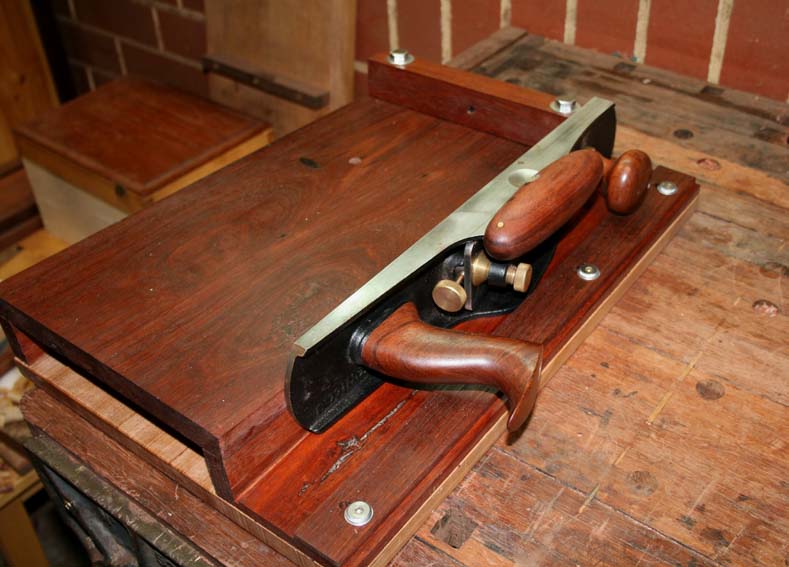Do you back the plane up and "take a run at it" to use the plane's momentum? Or something else?
The long story.
Last summer, a buddy of mine shipped me a Tom Bussey-prepared #606C Bedrock he'd bought a couple years ago and wasn't using. I didn't need another #6 but I just couldnt argue with a tool that had been machined flat and square by Tablesaw Tom. So I got it to use as a nice shooter. Problem is, I just couldn't find a way to hold it COMFORTABLY, during shooting. I couldn't find a good way to attach a hotdog and I wasnt willing to drill/tap mounting holes. So I horsed around and finally came up with a prototyope of a handle that works pretty well. That's a story for another thread.
But in the process of looking at "hotdog plans", I read Derek Cohen's comparison of the LV, Stanley and LN Shooting Planes and was struck by his comments on "momentum". My interpretation - and Derek please correct me if I misunderstood you - is that one reason the LN works so well is that it's the heaviest of the 3 tested, which lets one use momentum to your advantage in shooting. That led me to think that my previous technique wasn't right. I used to move the blade right up against the board to be "shot" and push it slowly through the cut. On hardwoods, that was sometimes tough. So this morning I tried making a "running start" at it - backing the plane up several inches to get it moving before it contacts the wood. And after a few tries I found it worked pretty well for me.
So I'm curious what you folks do? Have I got this completely wrong? Are there better techniques for using a bevel DOWN plane to shoot?
Thanks,
Fred




 Reply With Quote
Reply With Quote






